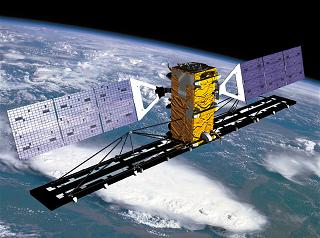Wikipedia dixit:
“The Larsen Ice Shelf is a long, fringing ice shelf in the northwest part of the Weddell Sea, extending along the east coast of the Antarctic Peninsula from Cape Longing to the area just southward of Hearst Island. It is named for Captain Carl Anton Larsen, the master of the Norwegian whaling vessel Jason, who sailed along the ice front as far as 68°10′ South during December 1893. In finer detail, the Larsen Ice Shelf is a series of shelves that occupy (or occupied) distinct embayments along the coast. From north to south, the segments are called Larsen A (the smallest), Larsen B, and Larsen C (the largest) by researchers who work in the area. Further south, Larsen D and the much smaller Larsen E, F and G are also named. The breakup of the ice shelf since the mid 1990s has been widely reported, with the collapse of Larsen B in 2002 being particularly dramatic.
Larsen C is the fourth largest ice shelf in Antarctica, with an area of about 50,000 km2 (19,000 sq mi). In 2004, a report concluded that although the remaining Larsen C region appeared to be relatively stable, continued warming could lead to its breakup within the next decade. News reports in summer of 2016 suggested that this process has begun. On 10 November 2016 scientists photographed the growing rift running along the Larsen C ice shelf, showing it running about 110 kilometres (68 mi) long with a width of more than 91 m (299 ft), and a depth of 500 m (1,600 ft). By December 2016, the rift had extended another 21 km (13 mi) to the point where only 20 km (12 mi) of unbroken ice remained and calving was considered to be a certainty in 2017. This will cause the collapse of between nine and twelve percent of the ice shelf, 6,000 km2 (2,300 sq mi), an area greater than the size of the US state of Delaware. After calving, the broken fragment will be 350 m (1,150 ft) thick and have an area of about 5,000 km2 (1,900 sq mi). If it calves without breaking into small fragments, it will be among the largest icebergs ever recorded.
On 1 May 2017 members of the Antarctic research group Project MIDAS, a British Antarctic research project observing the ever-growing crack, reported that satellite images showed a new crack, around 9 miles long (15 kilometers), branching off the main crack approximately six miles behind the previous tip, heading toward the ice front. Scientists with Swansea University in the UK say the crack lengthened 11 miles from 25 May to 31 May, and that less than 8 miles of ice is all that prevents the birth of an enormous iceberg.
Since the ice shelf is already floating, its departure from Antartica would not affect global sea levels. But a number of glaciers discharge onto it from the lands behind the ice shelf, and therefore might flow faster if it breaks away from the continent. If all the ice that the Larsen C shelf currently holds back were to enter the sea, it is estimated that global waters would rise by 10 cm (4 in).”
Video credit: ESA













 Subscribe to blog posts using RSS
Subscribe to blog posts using RSS










